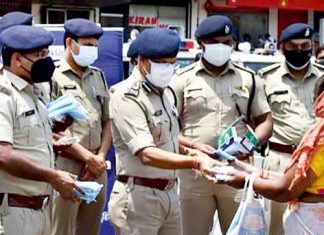
Managing mammoth gatherings either for religious purposes or entertainment like the Justin Bieber show that was recently organized at Dr. D.Y. Patil Stadium, Navi Mumbai, calls for intervention of either law enforcement agencies or private agencies to manage the crowd. Ensuring that the event is conducted peacefully and enjoyed by the public in the spirit that it is conducted is a challenge. In a brief interview with Jyoti Pathak, Kulwant K.Sarangal– Additional Director General, Police & Chief Vigilance Officer (Sales Tax) delves into the strategies involved in crowd management…
How do you define crowd control and crowd management?
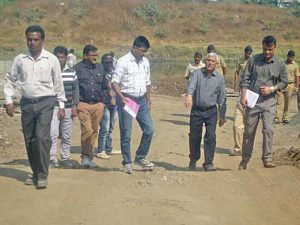 Real issue is not about definition but managing the gatherings. These two terms are generally used interchangeably but there are important differences though there may be some overlap as well. Let me first digress a bit and explain that the crowd has assumed a pejorative connotation, because of the earlier treatment of the subject by the likes of Gustave Le Bon, Hyppolyte Taine and William McDougall when it was said that men turn barbarian or wild beast in crowds or they act by instinct. So whenever a large body of individuals gathers at a place, the managers assume that they will behave irrationally, they will panic and riot. No doubt, the crowds do riot sometimes, they protest as well but the crowds are not always irrational, they do not panic and kill. But believe me, the crowds can be managed by simple crowd management strategies, techniques whereas crowd control may require sometimes use of force, arrests and preventing crowds from taking a particular direction but that is during hostile situations such as demonstrations, protests and soon. But when people do gather essentially to enjoy or worship or to take holy dip, the issues such as the nature of the event and nature of the venue, assessment of venue capacity, risks to the crowd arising out of the peculiar physical conditions of the venue, its design and likely local crowd densities to be formed when the crowd will circulate in the venue become important. As the crowd management events are planned events, the crowd managers have also to work out the strategies and tactics to facilitate the safe entry, circulation and exit of the crowd from the venue. So crowd management requires systematic planning for steering an ordered movement and accumulation of people. Crowd control, on the other hand, at times, is an unplanned reaction to group problem.
Real issue is not about definition but managing the gatherings. These two terms are generally used interchangeably but there are important differences though there may be some overlap as well. Let me first digress a bit and explain that the crowd has assumed a pejorative connotation, because of the earlier treatment of the subject by the likes of Gustave Le Bon, Hyppolyte Taine and William McDougall when it was said that men turn barbarian or wild beast in crowds or they act by instinct. So whenever a large body of individuals gathers at a place, the managers assume that they will behave irrationally, they will panic and riot. No doubt, the crowds do riot sometimes, they protest as well but the crowds are not always irrational, they do not panic and kill. But believe me, the crowds can be managed by simple crowd management strategies, techniques whereas crowd control may require sometimes use of force, arrests and preventing crowds from taking a particular direction but that is during hostile situations such as demonstrations, protests and soon. But when people do gather essentially to enjoy or worship or to take holy dip, the issues such as the nature of the event and nature of the venue, assessment of venue capacity, risks to the crowd arising out of the peculiar physical conditions of the venue, its design and likely local crowd densities to be formed when the crowd will circulate in the venue become important. As the crowd management events are planned events, the crowd managers have also to work out the strategies and tactics to facilitate the safe entry, circulation and exit of the crowd from the venue. So crowd management requires systematic planning for steering an ordered movement and accumulation of people. Crowd control, on the other hand, at times, is an unplanned reaction to group problem.
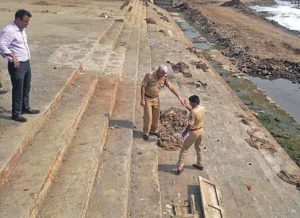 How is day-time crowd different from night-time crowd?
How is day-time crowd different from night-time crowd?
There is no difference between the day-time and night-time crowd as such but the risk factors may be entirely different during day-time and night-time even in the same venue. Composition of the crowd in terms of age or gender profile or size or physical conditions of the venue for the same crowd may pose different types of risks and management challenges.
During the musical concerts and live shows there is possibility of crowds going berserk with instances of alcohol consumption etc. How can such things be controlled?
Alcohol or no alcohol, people do come to such concerts to enjoy and they try to match the energy of the performer. Many a times, the rock stars also encourage the spectators to join the party. In any case, the organizers and the crowd managers should not expect that the concert goers would simply stand like robots and listen to the music. Such crowds are always vibrant and boisterous. So they should plan for crowd management accordingly. They will have to factor in that the spectators will require space to express themselves; they should anticipate the local areas within the venue where the crowd densities will be the highest.  People will converge around the front of the stage barriers. Crowd will exert immense force on such barriers. There will be lateral and dynamic surges and waves in crowded situation while they will push and shove to reach near the dais thus converging around barricades. I have observed and documented such surges and pressure in front of the stage barriers during rock concert that was staged in Mumbai in November 2016 when many spectators had to be surfed out as they were suffocating, gasping and panting just along the barriers. The barricades were reinforced by calling the labour while the stars were performing live. Elsewhere in the arena, a few spectators had fallen unconscious but, fortunately, the event largely went off peacefully without any major incident. So the crowd managers will require planning for comfortable crowd densities that will vary from point to point even within the venue. So founding the crowd management plan on the assumption that the crowd will be uniformly or evenly spread over the venue will be a gross mistake. Then there are different levels of service for sitting, standing and ambulatory crowds. While planning for rock concerts, you have to take into account that the spectators will be boisterous, they may go over-the-top but all such behaviour is normal; nothing wrong with such behaviour. Crowd will be much more lively than the spectators watching a match. Normally, in India, alcohol is not much of a problem during rock concerts, as it is not permitted in the main arena; it is sometimes allowed in VIP lounges or such other areas having not much of impact upon the general crowd. But yes, alcohol can be a problem so planners must keep this factor in mind while planning the events.
People will converge around the front of the stage barriers. Crowd will exert immense force on such barriers. There will be lateral and dynamic surges and waves in crowded situation while they will push and shove to reach near the dais thus converging around barricades. I have observed and documented such surges and pressure in front of the stage barriers during rock concert that was staged in Mumbai in November 2016 when many spectators had to be surfed out as they were suffocating, gasping and panting just along the barriers. The barricades were reinforced by calling the labour while the stars were performing live. Elsewhere in the arena, a few spectators had fallen unconscious but, fortunately, the event largely went off peacefully without any major incident. So the crowd managers will require planning for comfortable crowd densities that will vary from point to point even within the venue. So founding the crowd management plan on the assumption that the crowd will be uniformly or evenly spread over the venue will be a gross mistake. Then there are different levels of service for sitting, standing and ambulatory crowds. While planning for rock concerts, you have to take into account that the spectators will be boisterous, they may go over-the-top but all such behaviour is normal; nothing wrong with such behaviour. Crowd will be much more lively than the spectators watching a match. Normally, in India, alcohol is not much of a problem during rock concerts, as it is not permitted in the main arena; it is sometimes allowed in VIP lounges or such other areas having not much of impact upon the general crowd. But yes, alcohol can be a problem so planners must keep this factor in mind while planning the events.
In crowd management what are the proactive steps that need to be taken for potential problems?
The crowd managers and the organizers must appreciate that it is not the quantity, I mean to say the number of people, the numbers perse do not kill people in the crowds. It is the density that kills people in the crowds. So they have to plan for managing the crowd density. When I say they should manage crowd density, they essentially have to design a good venue and allow only as many people in the venue as the venue can hold safely measuring the capacity of the venue based on well-defined density measure which is considered to be harmless for the safety of the crowd. But again, the actual capacity of the venue as worked 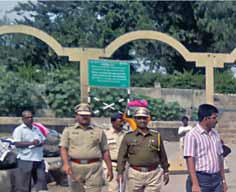 out may even not be adequate measure to hold that much crowd safely. Suppose you are planning crowd management for a rock concert in a stadium you must appreciate that the stadia are not designed to stage rock concerts but for spectators seated at terraces to watch matches. So you start with a handicap as the entry, exit, circulation systems are designed accordingly which you cannot tinker with much to suit your event. Then what you should plan for? First, you must establish the viewing area as the all areas in the stadium may not be suitable for viewing, there may be blind areas having nostage view. Then you should define the crowd density, which should normally be two persons per square meter, a measure that is acceptable all over the world for the safety of the crowd in such arenas. Using both the above figures, you have to establish the holding capacity of the venue. But this may not be your final venue capacity as the capacity of entry and exit systems and emergency exit system may further require scaling down the actual holding capacity. It is not difficult to fill the arenas or venues with people provided your queue system and crowd flow management is efficient and at the same time you are able to take people in before the show starts; that is pretty easy but the challenge is to take them out in case of an untoward incident happening. It is generally accepted that arenas should hold as many people as many can be evacuated through well managed emergency exits within a time spanning 2.5 minutes to 8 minutes; depending upon the spread and gravity of the incident, the urgency to take people out of the arena will increase and hence, the lesser evacuation time. Accordingly, you have to plan for utilities, communication and emergency management.
out may even not be adequate measure to hold that much crowd safely. Suppose you are planning crowd management for a rock concert in a stadium you must appreciate that the stadia are not designed to stage rock concerts but for spectators seated at terraces to watch matches. So you start with a handicap as the entry, exit, circulation systems are designed accordingly which you cannot tinker with much to suit your event. Then what you should plan for? First, you must establish the viewing area as the all areas in the stadium may not be suitable for viewing, there may be blind areas having nostage view. Then you should define the crowd density, which should normally be two persons per square meter, a measure that is acceptable all over the world for the safety of the crowd in such arenas. Using both the above figures, you have to establish the holding capacity of the venue. But this may not be your final venue capacity as the capacity of entry and exit systems and emergency exit system may further require scaling down the actual holding capacity. It is not difficult to fill the arenas or venues with people provided your queue system and crowd flow management is efficient and at the same time you are able to take people in before the show starts; that is pretty easy but the challenge is to take them out in case of an untoward incident happening. It is generally accepted that arenas should hold as many people as many can be evacuated through well managed emergency exits within a time spanning 2.5 minutes to 8 minutes; depending upon the spread and gravity of the incident, the urgency to take people out of the arena will increase and hence, the lesser evacuation time. Accordingly, you have to plan for utilities, communication and emergency management.
What kind of training is available and imparted to guards/security personnel involved in crowd management? What kind of equipment training is available in India?
My experience says that we still have to go a long way in this regard. First, we require some standardization what we have to learn and from whom.
Elaborate on the role of communication inmanaging the crowds? What is the process?
 Communication for managing crowds has essentially to be planned at different but interdependent and layered planes. First part concerns the crowd managers and other stakeholders; communication among the various stakeholders and various components of the crowd management system should not only be seamless but also timely for decision support system so that all the stakeholders have shared and common view of the situation and also draw the same meaning from whatever is conveyed to them. It will be possible only if communication or information flow within the crowd management system is planned thoughtfully. Secondly, the managers will also have to collect information about the crowd, its movements, the venue and so on. I have dealt with the subject of information flow management in crowd situations elsewhere in detail.
Communication for managing crowds has essentially to be planned at different but interdependent and layered planes. First part concerns the crowd managers and other stakeholders; communication among the various stakeholders and various components of the crowd management system should not only be seamless but also timely for decision support system so that all the stakeholders have shared and common view of the situation and also draw the same meaning from whatever is conveyed to them. It will be possible only if communication or information flow within the crowd management system is planned thoughtfully. Secondly, the managers will also have to collect information about the crowd, its movements, the venue and so on. I have dealt with the subject of information flow management in crowd situations elsewhere in detail.
What happens in case of communication breakdown during crowd management? Developed countries are better geared to meet the disaster challenges?
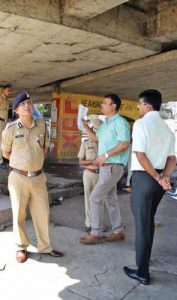 Communication breakdown in any situation or in any system can lead to some sort of crisis or disaster or accident. However, in crowd situations, it is more dangerous to have communication breakdown. Let me explain just one breakdown though there are many ways communication can breakdown or fail during crowd situations. Crowd research suggests that failures of front-to-back communication are common in crowd disasters, the failures that lead to accidents or aggravation of an accident that already has happened. In crowded situations, especially standing and ambulatory crowds, the densities at the front are always more than the rear. I have already spoken about different crowd densities within the same venues or arenas. Such communication failures make those at the rear believe that there is still space in the front and they keep
Communication breakdown in any situation or in any system can lead to some sort of crisis or disaster or accident. However, in crowd situations, it is more dangerous to have communication breakdown. Let me explain just one breakdown though there are many ways communication can breakdown or fail during crowd situations. Crowd research suggests that failures of front-to-back communication are common in crowd disasters, the failures that lead to accidents or aggravation of an accident that already has happened. In crowded situations, especially standing and ambulatory crowds, the densities at the front are always more than the rear. I have already spoken about different crowd densities within the same venues or arenas. Such communication failures make those at the rear believe that there is still space in the front and they keep 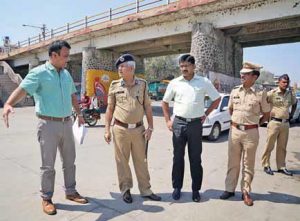 pushing ahead but the crowd at the rear does not know of important conditions such as blockage, bottleneck or collapse at the front of a crowd. As forces become large, those at the rear also do not know that their actions are injuring those at the front. “The Who” concert disaster at Riverfront Coliseum in 1979 in Cincinnati, Ohio, is a classic example of front-to-back communication failure that killed eleven people. So communication, no doubt, is a critical factor for managing crowds successfully. As far as developed countries are concerned, may be they have better systems, equipment, procedures but crowd accidents happen very regularly there as well. Some of the worst tragedies have happened in football stadia in Europe and Mecca.
pushing ahead but the crowd at the rear does not know of important conditions such as blockage, bottleneck or collapse at the front of a crowd. As forces become large, those at the rear also do not know that their actions are injuring those at the front. “The Who” concert disaster at Riverfront Coliseum in 1979 in Cincinnati, Ohio, is a classic example of front-to-back communication failure that killed eleven people. So communication, no doubt, is a critical factor for managing crowds successfully. As far as developed countries are concerned, may be they have better systems, equipment, procedures but crowd accidents happen very regularly there as well. Some of the worst tragedies have happened in football stadia in Europe and Mecca.
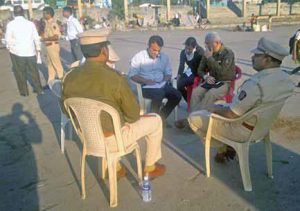 So crowd disasters can be avoided?
So crowd disasters can be avoided?
Absolutely true. It is essentially about crowd dynamics and it varies from venue to venue. Whenever an event is organized you have to know the venue well, its capacity and how the crowd will move around in the venue. We as crowd managers should facilitate the purpose for which the crowd has gathered rather than imposing restrictions.




